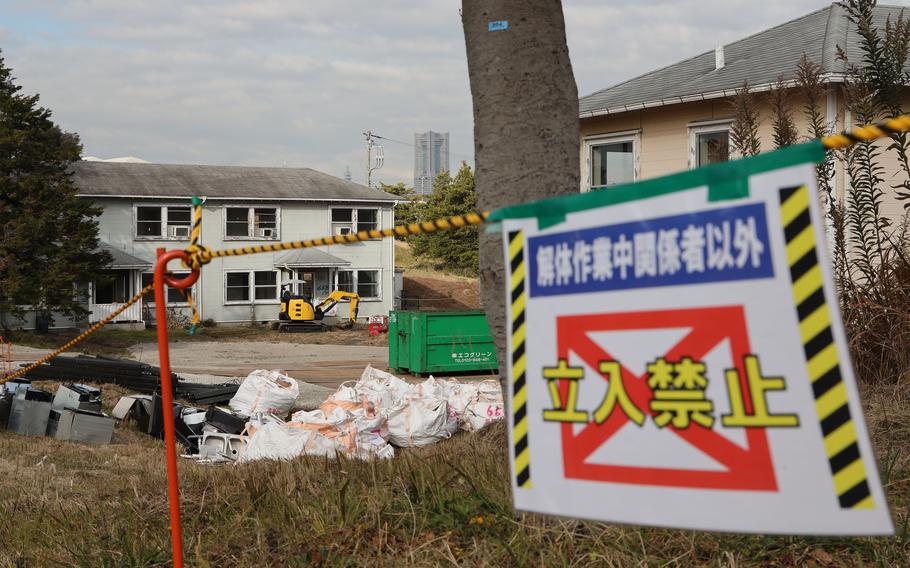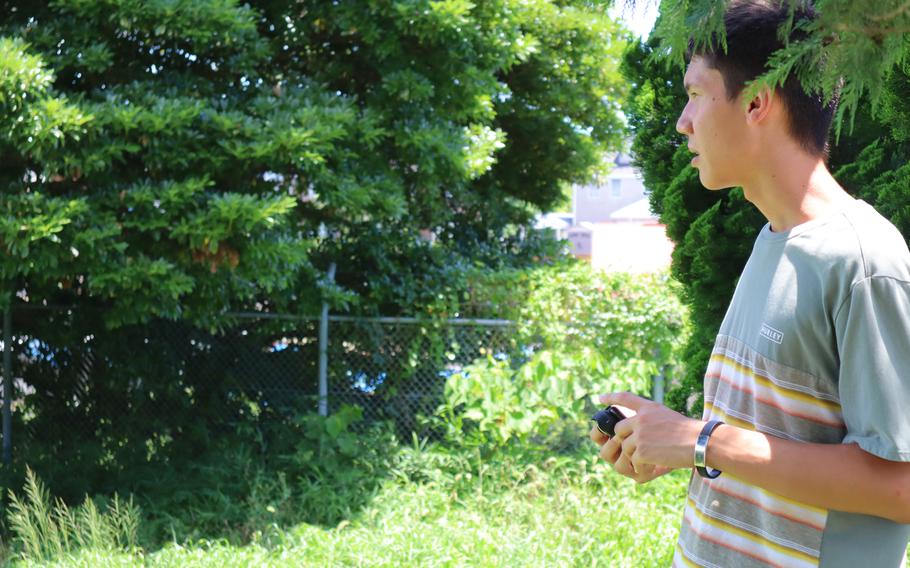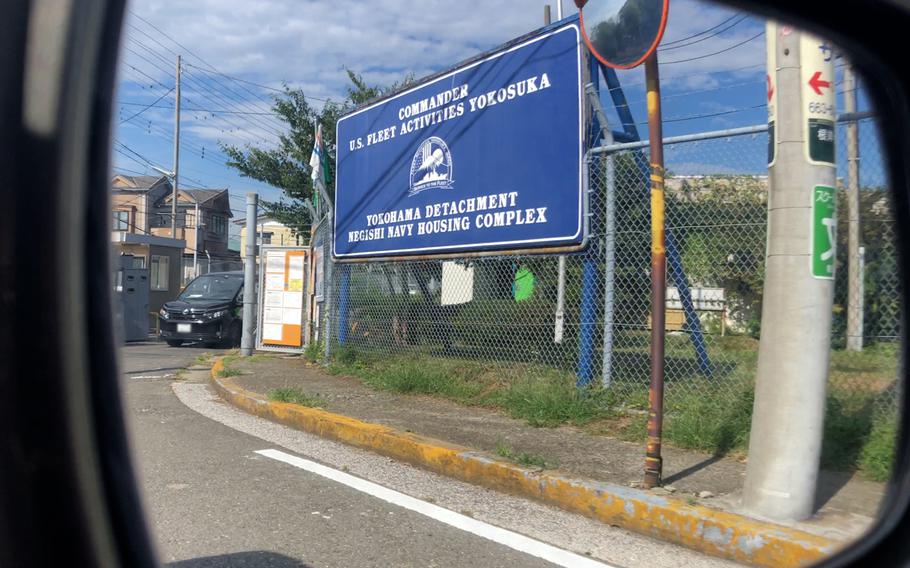Asia-Pacific
‘Things don’t last forever:’ College student documents demolition of US Navy housing complex in Japan
Stars and Stripes December 29, 2023

A sign in Japanese, seen here in 2022, warns people to stay out due to demolition at the Negishi Housing Annex in Yokohama, Japan. (Taiyo Reimers)
YOKOSUKA NAVAL BASE, Japan — The son of a Navy family documented the demolition of a former military housing complex over two years in Yokohama, a video project that yielded a personal reflection of his childhood home.
The video, “By Fair Winds (a story of Negishi Heights),” is filled with scenes of vine-covered homes at the former Naval Housing Annex Negishi, vintage footage of its better days and heartwarming stories shared by former residents — an homage to video producer Taiyo Reimer’s earliest memories in Japan, he told Stars and Stripes on Dec. 20.
“It wasn’t for anybody, really, but myself,” Reimers, now a student at Keio University in Tokyo, said of the video. “It was at first my attempt to try and claim any semblance of a childhood, or memories of a childhood, that I could. And then later, it became a way of moving forward and recognizing that things don’t last forever — and that I do have so much to be thankful for right now.”
Reimers, the son of retired Navy officer Stephen Reimers and Wakana Reimers, lived at Negishi from 2012 to 2014. While his stay was brief, he considered the annex the one place he could call a childhood home before the family moved to other locations in Japan, including U.S. Army Camp Zama or Yokosuka Naval Base in Kanagawa prefecture.
“When I look back on Negishi, in contrast with my middle school time, things were a lot more easygoing,” he said. “We did a lot of things as a family; I just kind of went along with the flow.”
Fifteen trips and 40 people
Annexed by the U.S. military in 1947, the 106-acre facility eventually fell under Yokosuka Naval Base and at one time housed up to 2,000 residents across 400 homes. In 2014, U.S. Forces Japan agreed to return the site to Japan, along with several other parcels, such as the Kamiseya Communication Site and the Tomioka Storage Area.
After learning that Negishi was slated for demolition in 2021, Reimers, 19, decided to put his burgeoning passion for videography to work and tell the story of his childhood home. Over the following two years, he made more than 15 trips and interviewed over 40 people to complete his project, which he posted as a 26-minute video Nov. 22 on YouTube.
Since then, the video has garnered a solid 1,400 views and about a dozen comments from viewers and former residents.
“I’m sure many have wished to have gone back [to Negishi] prior to the demolition to seek their personal closure,” Sam Gentile, whose interview was featured in the video, said in a YouTube comment. “With this production, you captured an amazing and special part of our lives where many memories will be cherished.”
In the video, Gentile recalled attending Boy Scouts meetings at Negishi’s public works center, but added that “other than that, there wasn’t a whole lot up in Negishi” when he lived there between 1973 and 1981.
Several others touched on the lack of amenities at Negishi in the video, but few saw it as a detriment to their experience there. Instead, it was part of the charm.

Taiyo Reimers, seen here filming at the Navy's Negishi housing annex in July 2022, documented the history and demolition of the annex in Yokohama, Japan. (Isabella Hopkins)
‘We’d head off on our bikes’
“I would get on my bike, and my friend and I would pack a lunch and we’d head off on our bikes down the roads and across fields,” Harriette Nickerson Downing, an Army dependent who lived there between 1954 and 1956, said in the video. “But nobody ever said ‘Get out of here, this is our land,’ — we were just roaming.”
Reimers set his own recorded material and vintage footage provided by former residents to a gentle piano soundtrack composed by Aaren Hozumi Duff, one his university classmates.
“I shared it with a lot of people that came back and said that while they might not know anything about Negishi — never even heard of it or even thought about the military in Japan — but said, ‘It makes me feel nostalgic too,’ ” he said.
Now that his multiyear project is complete, Reimers said he’s considered submitting it for film festivals and other awards — but he clarified that the video was ultimately a passion project for him.
“I’ve met so many people through this that I would have never met or had a reason to meet otherwise,” Reimers said. “That’s just been so nice, and I don’t want that to end, because it’s nice talking about memories with other people that I don’t know at all. So, I guess this is sort of a conversation starter in a way too.”

The U.S. Navy's Negishi Housing Annex in Yokohama, seen here in 2022, once provided homes for 2,000 people assigned to Yokosuka Naval Base, Japan. (Taiyo Reimers)